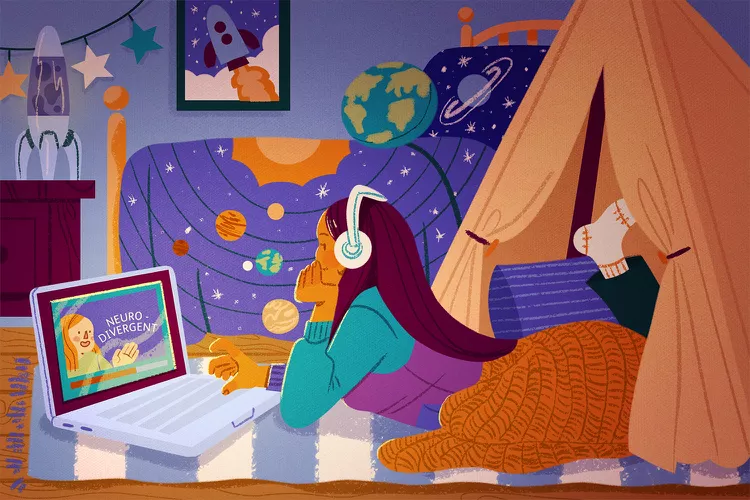- August 31, 2024
More Women Are Getting Diagnosed With Autism Than Ever Before

Traditionally, autism spectrum disorder (ASD)—a developmental disorder caused by differences in the brain—has been most commonly associated with boys. Current figures suggest that one female is diagnosed with Asperger’s or autism for every four males diagnosed, but the Asperger/Autism Network (AANE) says the actual prevalence is more like one autistic female for every three males.
Growing evidence indicates the failure of longstanding diagnostic procedures to establish how ASD manifests in women, which is likely to amplify the disparity in prevalence rates. Data may also be impacted by the fact that women tend to be diagnosed with ASD at significantly later ages.
What’s more, they’re more likely to experience greater delays between the time of initial evaluation to receiving a clinical diagnosis of ASD. This is reflected in conversations happening on social media, where the popularity of autism and neurodivergent-centric Tiktok and Instagram pages has exploded in recent years.
April is Autism Awareness Month, so a broadening of the discussion around women with autism is essential for improving diagnosis and care.
Autism in Women
People with ASD often have issues with communication and interaction in social settings, and display reduced or repetitive behaviors. They may also have different ways of application, learning, or moving.
“The symptoms of autism in women typically aren’t that different from men,” says Amy Morin, LCSW, psychotherapist. However, girls and women may display different outward reactions to the profile, according to AANE. Of course, every girl and woman with ASD is unique—but many share specific experiences.
“Women may be better at social interactions because they observe and copy other people’s gestures,” says Morin. “They may also recognize that it’s socially appropriate to make eye contact even when they feel uncomfortable doing so. Women tend to be better at masking their autism symptoms and we’re used to seeing the classic signs in men which tend to be more obvious.”
A female with ASD may be aware that she is different—perhaps in the way that her interests aren’t the same as those of her peer group. She may be more comfortable with only a couple of friends than a large group and may enjoy spending time alone. She may also feel an aversion to what is widely considered popular, feminine, or fashionable.
Many girls with ASD are sensitive to textures, favoring comfortable, practical clothing. Sometimes they come across as naive or immature, or bucking social norms.
In all of these cases, a female with ASD may work very hard to disguise her social anxiety or confusion around who she is, by imitating her peers, relying on a fantasy world, or isolating herself from social activity. At the same time, she may display different aspects of her personality in different social settings. When she’s at home, she may release her pent-up feelings through outbursts and feel tired from the pressure of interpreting social etiquette and hiding her true self.
“Boys with autism tend to have more repetitive and limited areas of play, whereas girls are less repetitive but have broader areas of play. They are also more likely to respond to nonverbal communication,” says Julian Lagoy, MD, a psychiatrist with Mindpath Health.
“We’re getting better at recognizing autism in women,” adds Morin. “Women tend to be better at masking their symptoms and we’re used to seeing the classic signs in men which tend to be more obvious.”
Raising Awareness of the Spectrum
Increasing awareness of ASD in general helps to dismantle the stigma, says Dr. Lagoy. “It helps people understand the disorder more and be less judgmental and stigmatizing to those with it,” he says.
For women who are diagnosed with ASD in later life, more awareness and less stigma can be extremely empowering.
“It can help explain a lot of things for individuals, and also helps empower them to understand themselves better,” says Dr. Lagoy. “People tend to look down on individuals with autism, however, they have many unique and positive qualities that should not be overlooked. We should value everyone for their unique gifts.”
A growing number of people with autism speaking out about their diagnosis and their experiences can help break down some of the stereotypes people have from how they’ve seen it portrayed on TV or in the movies, adds Morin. “Increased awareness may help some women feel more comfortable talking to a professional about their symptoms,” she explains.
Sometimes people experience a sense of relief when they receive a diagnosis later in life. “They may feel like they finally have a name for all the things they’ve experienced or an explanation for their symptoms,” Morin says. “A diagnosis may also give them an opportunity to connect with other people who share the same diagnosis.”

